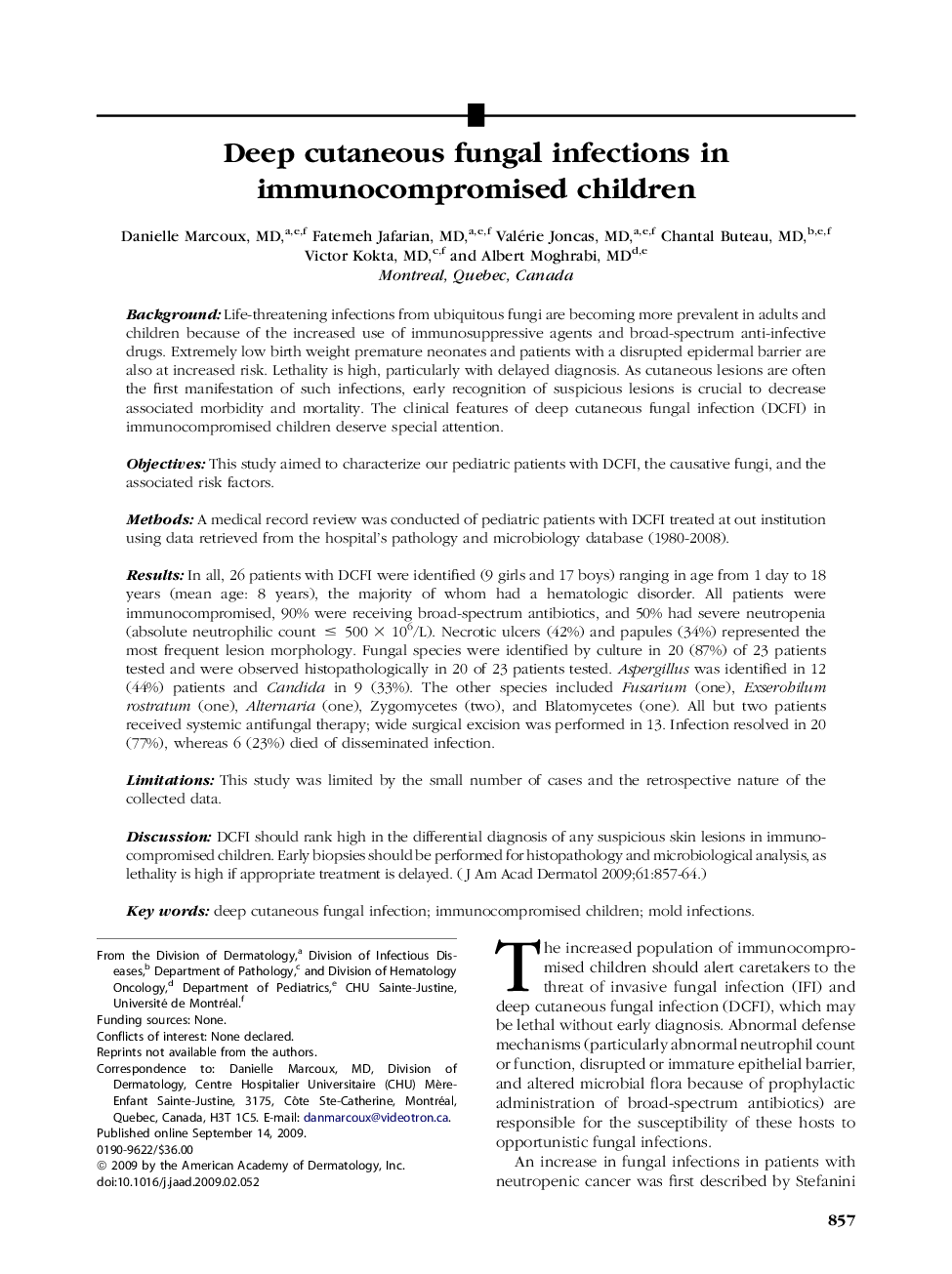| کد مقاله | کد نشریه | سال انتشار | مقاله انگلیسی | نسخه تمام متن |
|---|---|---|---|---|
| 3209062 | 1587601 | 2009 | 8 صفحه PDF | دانلود رایگان |

BackgroundLife-threatening infections from ubiquitous fungi are becoming more prevalent in adults and children because of the increased use of immunosuppressive agents and broad-spectrum anti-infective drugs. Extremely low birth weight premature neonates and patients with a disrupted epidermal barrier are also at increased risk. Lethality is high, particularly with delayed diagnosis. As cutaneous lesions are often the first manifestation of such infections, early recognition of suspicious lesions is crucial to decrease associated morbidity and mortality. The clinical features of deep cutaneous fungal infection (DCFI) in immunocompromised children deserve special attention.ObjectivesThis study aimed to characterize our pediatric patients with DCFI, the causative fungi, and the associated risk factors.MethodsA medical record review was conducted of pediatric patients with DCFI treated at out institution using data retrieved from the hospital's pathology and microbiology database (1980-2008).ResultsIn all, 26 patients with DCFI were identified (9 girls and 17 boys) ranging in age from 1 day to 18 years (mean age: 8 years), the majority of whom had a hematologic disorder. All patients were immunocompromised, 90% were receiving broad-spectrum antibiotics, and 50% had severe neutropenia (absolute neutrophilic count ≤ 500 × 106/L). Necrotic ulcers (42%) and papules (34%) represented the most frequent lesion morphology. Fungal species were identified by culture in 20 (87%) of 23 patients tested and were observed histopathologically in 20 of 23 patients tested. Aspergillus was identified in 12 (44%) patients and Candida in 9 (33%). The other species included Fusarium (one), Exserohilum rostratum (one), Alternaria (one), Zygomycetes (two), and Blatomycetes (one). All but two patients received systemic antifungal therapy; wide surgical excision was performed in 13. Infection resolved in 20 (77%), whereas 6 (23%) died of disseminated infection.LimitationsThis study was limited by the small number of cases and the retrospective nature of the collected data.DiscussionDCFI should rank high in the differential diagnosis of any suspicious skin lesions in immunocompromised children. Early biopsies should be performed for histopathology and microbiological analysis, as lethality is high if appropriate treatment is delayed.
Journal: Journal of the American Academy of Dermatology - Volume 61, Issue 5, November 2009, Pages 857–864